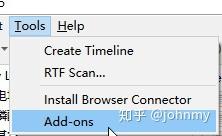

Finally, I will remove the note from the primary collection. Once notes and tags are added to a reference, I drag the reference into the Reviewed subfolder. It makes it easier to write about a specific point. These tags help to rapidly identify themes across all the notes. Once all the notes are added, I will add tags to each of the notes. I will create a new note for notes that fall in a major theme or chapter. Next, I will review the article in detail and add details to the Notes section of Zotero for the article. I will add new references to the primary collection folder as I acquire them. I use these folders to control my workflow. Next, I will create two subfolders: Reviewed and Moved to Scrivener. I will set up a primary collection for the book. I create a collection for the article or book I am writing. While all the notes are part of a large library, one can create a collection or subset of the library. Additionally, I add tags to help identify key themes from the collection of notes. I use this tool to collect my references and document key findings as notes. I am going to focus on what I do between Zotero and Scrivener.

It now uses five tools: Diigo, Evernote, Zotero, Scrivener, and Google Docs. My process for writing books has evolved over time. I explained that I use Zotero with Scrivener. He asked me about my process for researching a book and the tools I used. MS Word must be able to 'talk' to Zotero to pull the references.The other day I was having lunch with my publisher, Loren Mayshark from Red Scorpion Press.

Step 4: How to use the Zotero Desktop Application.Sync your online account (Zotero webpage) with the desktop software.Download the Connector Software for Chrome Browswer.Step 3: Zotero Desktop Application and Connector Installation.View the video below on how to enter new references into the webpage library.



 0 kommentar(er)
0 kommentar(er)
